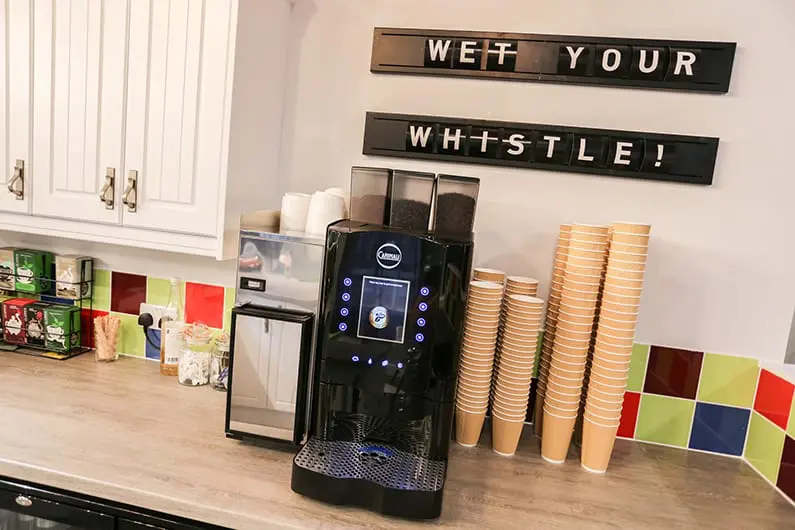Finding Your Voice – Establishing Your Brand Tone of Voice & Replicating It
approx 9 minute read
What does tone of voice mean in branding?
Your voice is the essence of how you express yourself, your values and your mission as a business in written and spoken communications. The tone of your brand voice helps your customers pre-empt what to expect from your service and guides your team to deliver that consistently. Tone of Voice describes the way your brand speaks to its audience. What your business sounds like, and what people can expect from you.

What is an example of tone of voice?
There are a multitude of aspects making up tones of voice, each can be used in isolation or in conjunction with others.
A brand’s voice might be that of a caring, parental, confident presence that evokes a cosy and protected feeling that builds trust in the brand. An example of this is seen in brands whose ideal client would be parents of babies, like Aptamil. It builds confidence in the consumer that this brand shares the parents’ value and is a trustworthy business who shares their interests; raising healthy, strong babies.
A different tone of voice might be that of the pioneer, at the forefront of technology and ready to upset the status quo. They may use short sentences and superlatives (words like most, best, fastest). Tesla would be an example of a brand with a tone of voice like this. They make their clients and audience envision that fast, futuristic and luxurious life they want to live.
Why does tone of voice matter to my branding?
Branding is the way to share your values and mission with your audience across all senses; visual, aural, tactile, olfactory and gustatory. Your brand Voice appeals to your target clients’ emotions and goals. It tells the story of what life is like when they work with you. It gives another layer of personality to your brand.
Tone of Voice to distinguish your brand from competitors
How do you stand out from the crowd? In a world of stiff, bureaucratic businesses, are you a voice of human connection and understanding? When your competitors take a laissez-faire approach, do you champion efficiency and results?
Appeal to an Audience with Tone of Voice
When trying to break into a new customer segment or establish yourself in a geographical location, mirroring the language of your target audience can be a great way to speak to the people, literally. Use the phrases of your ideal age demographic. Adapt for the colloquialisms of your new location.
Your tone of voice can connect you to the people, or create a contrast from competitors. Use it wisely.
How can a clear, consistent and intentional tone of voice help my business?
It’s not what you said, it’s how you said it.
When speaking to someone, the nonverbal cues we share massively influence the message they receive. In a world where our clients are inundated with communications, every touch point we make is crucial to grabbing attention and making an impression. Establishing a clear, consistent and intentional tone of voice increases the likelihood that your message will be received and resonate with your target audience.
- Bring your brand to life with tone of voice, inject anything from humour to comfort to authority, with your voice.
- Make yourself relatable to your audience by mirroring the language and tones they use when speaking to one another.
- Motivate your target audience to envision a certain life for themselves through your brand voice. Tell the story of what their life will look like with your product or service.
- Remove a barrier to trade – the unknown – by allowing your audience to build an image of what to expect from your brand if they work with you. Are you cheeky and informal? Or factual and no-nonsense? Pave a clear path to working with you by sharing an insight into your personality.
- Useful content – an established tone of voice enables you to speak directly to the reader, in words that they understand and connect with. This builds confidence in your brand and improves the user’s experience as they interact with your marketing. Read more about the impact of website content on your Search Engine Optimisation.
How do I create my tone of voice?
-
List your Brand Values
The voice of your brand should emulate who you are, what you value and how you interact with your audience. Begin by identifying what your brand values are. This blog will help you identify your brand values.
-
Create an Ideal Customer Avatar
Answer these questions to build an image of who your ideal customer is:
- Who would benefit the most from your offering? How would it impact their lives?
- What do they do for a living, where are they based, what are they interested in?
- Why would they love your product or service?
It may help to answer the above questions thinking of a particular person in your life that you know would fit the description. Highlight the outstanding qualities about them that would make them a perfect match for your business.
If you’re an established business, list your top 3 best/ most profitable clients. Answer the following questions about each:
- What industry are they in?
- What is your contact’s role in the business?
- Where are they based?
- Why do you enjoy working with them?
- How would you describe their demographic? Think about their age, interests, values or other outstanding commonalities across your top clients.
3. Once you have established the avatar of your ideal client, brainstorm how you should speak to them:
What are they looking for from your business? To feel luxurious? Efficient? Safe? Avant garde?
Where do these audiences currently get your service from? What do those sources sound like? Are they authoritative and factual? Quirky and witty? Caring and homely?
Research your target audience to identify if they have certain needs or expectations from a business like yours. How do they want to interact with you as a service provider? What language do they use together?
4. You should now have a bank of information that builds a picture of the feelings you want to evoke with your voice. Identify the following:
Which common types of tone fit into your goal? Formal or colloquial? Quirky and friendly? Or official and authoritative, with lots of industry specific terminology? Add to this list if you have identified other prominent qualities.
What literary techniques are you going to use to emulate this type of tone? Check out this list of techniques you could draw from and take a look through examples of literary techniques at work in copywriting.
I already have an established brand, how do I uncover my tone of voice?
What great news, you’re way ahead already! Many businesses have adopted a distinct tone of voice without even realising it. Here are some ways to uncover yours.
Annotate Marketing to Illustrate use of Voice
Particularly if your tone of voice came into existence pretty organically, annotating marketing or communications that effectively sound like your brand, can help you identify what it is that makes your tone of voice, and also highlight to others ways in which they can recreate it.
Find Your Tone of Voice
Take 1-5 documents that effectively sound like your brand and ask yourself:
- What tone is it written in? Is it serious, playful, informative, cheeky, sarcastic, caring?
- If I knew nothing about the company, how would I feel when reading this? Are they authoritative, expert, relatable, forward-thinking?
- What literary techniques or words keep cropping up? Are there a lot of short sentences and technical terms? Does it have metaphors or similes? Alliteration or assonance, rhyme or rhetorical questions?
Analyse your Findings to build a Framework
From your answers in 1-3 above, which are the most crucial parts to sounding like your brand? What should be included always and what should be dispersed sparingly throughout? Begin building key aspects that form the core of what your Tone of Voice really is.
Challenges with brand tone of voice
My employees keep butchering my brand’s tone of voice!
Sometimes, as hard as we will and want our colleagues and partners to adopt and use our tone of voice, they still fall flat. Here’s how you can prevent others sounding farcical when they create content for you.
Your tone of voice should seep into everything you do. Remind your teams of the key internal and external communication routes where they should bear the brand Tone of Voice in mind.
External
- Website content
- Website blogs
- Marketing collateral
- Social media captions and comments
- Press Releases
- Interviews
Internal
- Brand Identity Document
- Brand values
- Internal knowledge articles
- Internal group communications
Help – my digital marketing agency just asked me what my tone of voice is, what do I say?
You may have many people (internally or externally) working on projects that require your tone of voice, sometimes team members can struggle to get the tone of voice. When dealing with external parties like social media management companies, content creators or copywriters they will also ask you for input on your tone of voice to create authentic work. Here are some tips on replicating your Tone of Voice more easily!
Guidelines to maintaining a consistent tone of voice across marketing and communications
If you don’t have Brand Guidelines and you’re looking to grow and scale your business, you need to contact a marketing or design team, like your local Nettl, to get those sorted, pronto. If you have already created your Brand Guidelines, make sure you’ve included some instructions around tone of voice.
Include a framework tone and literary techniques used with examples of them in action. This way, until your team internalises your Tone of Voice themselves, they can pluck a few examples from here.
- Create a bank of tone of voice types / phrases
- List the literary techniques that achieve this tone, with explanations of each
- Add key questions others can use to review whether they’ve nailed the tone of voice
Here’s an example of Tone of Voice Guidelines:
Our tone of voice can be described as:
Quirky, fun, old-timely, other-worldly and informal.
We’ve collected literary techniques, phrases and words for you to include in your writing to help achieve something quintessentially Nettl in nature.
Access their attention with alliteration
Repeated use of the first letter in a word. It makes writing more playful and helps it roll off the tongue.
E.g. Well, then. Who could have predicted a wet market in Wuhan would impact workers of Westport in such a bewildering way?
Rhyme
Using words that end in the same sound. This adds a musical feel to the writing and encourages people to keep reading on.
E.g. We’re your Nettl, better than a dream. Think of us as your marketing team. Because more customers, Old Bean.
Help me create my Tone of Voice
If this blog has left your brain a little frazzled don’t fret, we’re here to help. Reach out to your local Nettl Team for help and advice on creating a brand that brings your business to life and speaks personally to your target audience.





